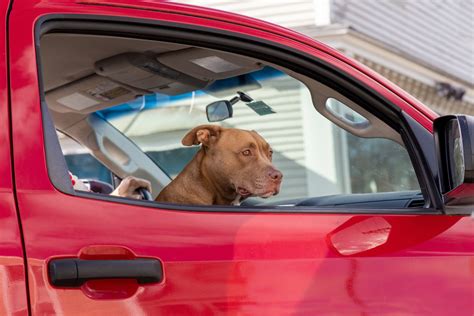Introduction

Our furry friends deserve the best care and safety, especially when we’re hitting the road. With more and more pet owners traveling with their canine companions, it’s crucial to prioritize dog car safety. This comprehensive guide will equip you with essential tips and precautions to ensure your furry buddy’s well-being during car journeys.
Section 1: Dog Car Safety Tips
-
Secure Your Dog:
– Use a dog crate that’s large enough for your pet to stand up, turn around, and lie down comfortably.
– Secure the crate in the car with bungee cords or a cargo net.
– Alternatively, use a dog harness or a dog seat belt to restrain your pet safely. -
Keep Your Dog Hydrated:
– Bring plenty of water for your dog, especially during long trips.
– Use a travel water bowl or a spill-proof water bottle to prevent spills. -
Provide Ventilation:
– Ensure proper ventilation in the car by opening windows slightly or using a fan or air conditioning.
– Avoid leaving your dog alone in a parked car, as temperatures can rise dangerously quickly. -
Check Your Dog Regularly:
– Take frequent breaks to check on your dog’s well-being.
– Ensure they have access to fresh air, water, and a potty break if needed. -
Use a Dog Bed or Blanket:
– Provide your dog with a comfortable dog bed or blanket for comfort and warmth.
– Choose a non-slippery material to prevent your dog from sliding around. -
Avoid Feeding Your Dog Before Traveling:
– Feeding your dog immediately before a car journey can lead to car sickness.
– Wait at least an hour after feeding before hitting the road. -
Practice Car Rides Gradually:
– Start with short car rides to help your dog adjust gradually.
– Gradually increase the duration and distance of the rides over time.
Section 2: Dog Car Safety Precautions
-
Never Leave Your Dog Unattended:
– Leaving your dog unattended in a car, even for a short period, can be extremely dangerous.
– Temperature fluctuations can cause heatstroke or hypothermia, leading to life-threatening consequences. -
Be Aware of Hot and Cold Temperatures:
– Avoid traveling with your dog during extreme temperatures, especially during summer and winter.
– If you must travel during these times, take extra precautions, such as using air conditioning or heating and providing ample ventilation. -
Secure Loose Objects:
– Secure all loose objects in the car, including toys, bags, and other items.
– Loose objects can become dangerous projectiles in the event of an accident. -
Avoid Distractions:
– Keep your focus on driving and avoid distractions such as interacting with your dog or using your phone.
– A sudden movement or distraction can startle your dog, leading to an accident. -
Train Your Dog for Car Rides:
– Train your dog to behave calmly in the car by teaching them basic commands such as sit, stay, and down.
– Rewarding your dog for good behavior can reinforce positive associations with car rides.
Conclusion
By following these dog car safety tips and precautions, you can ensure that your furry friend enjoys safe and comfortable car journeys for years to come. Remember, it’s not just about convenience; it’s about prioritizing the well-being of your beloved pet. So, next time you hit the road with your dog, make sure to put their safety first.
Frequently Asked Questions (FAQs)
How often should I take breaks when traveling with my dog in the car?
It’s recommended to take breaks every 2-3 hours to allow your dog to stretch, relieve themselves, and have access to fresh air.
Is it safe to let my dog ride in the front seat?
Although it’s tempting to have your furry friend close by, it’s generally not recommended to let your dog ride in the front seat. In the event of an accident, airbags can deploy with great force, injuring your dog.
What are the symptoms of heatstroke in dogs?
Symptoms of heatstroke in dogs include excessive panting, drooling, vomiting, diarrhea, disorientation, and seizures. If you suspect your dog is experiencing heatstroke, seek veterinary attention immediately.
How do I choose the right dog crate for my car?
When choosing a dog crate for your car, ensure it’s large enough for your dog to stand up, turn around, and lie down comfortably. The crate should also be made of durable material and have proper ventilation.





















